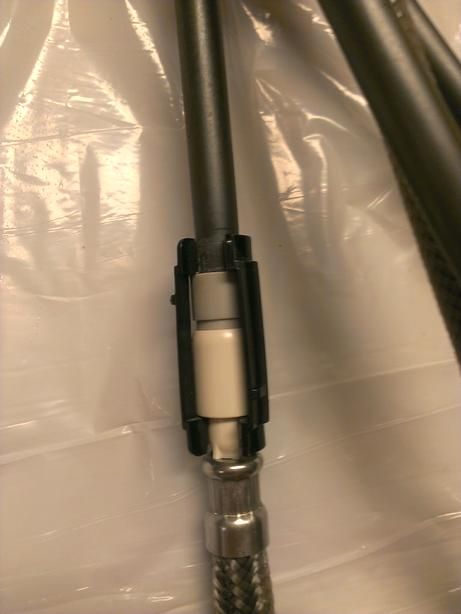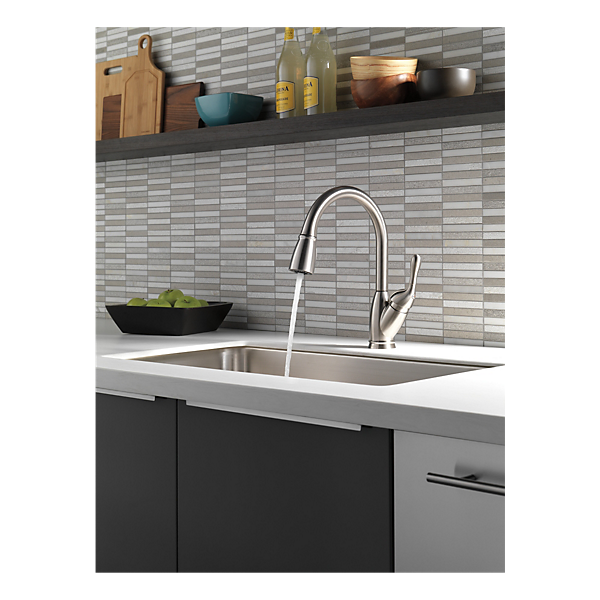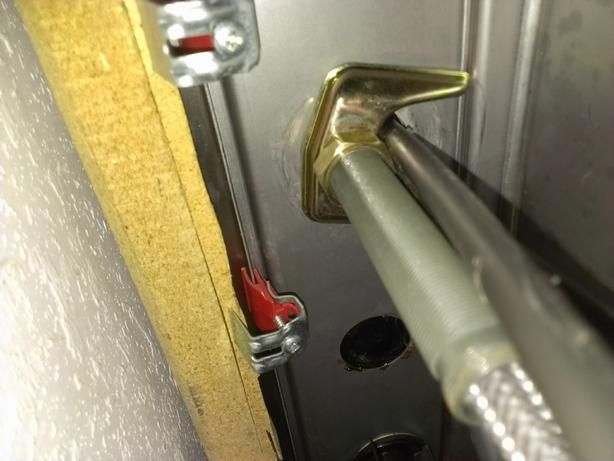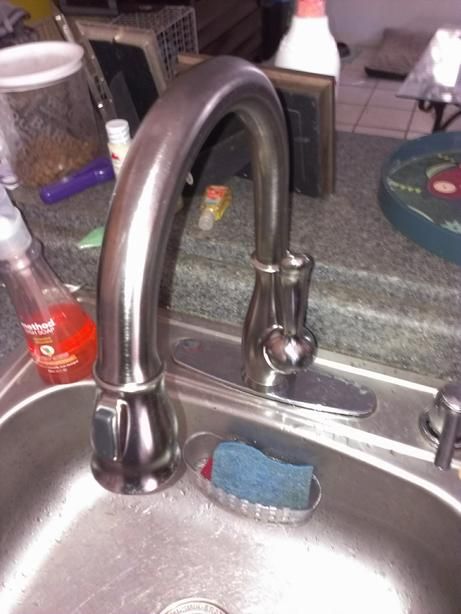 
Over 698,000 strictly plumbing related posts
Plumbing education, information, advice, help and suggestions are provided by some of the most experienced plumbers who wish to "give back" to society. Since 1996 we have been the best online (strictly) PLUMBING advice site. If you have questions about plumbing, toilets, sinks, faucets, drains, sewers, water filters, venting, water heating, showers, pumps, and other strictly PLUMBING related issues then you've come to the right place. Please refrain from asking or discussing legal questions, or pricing, or where to purchase products, or any business issues, or for contractor referrals, or any other questions or issues not specifically related to plumbing. Keep all posts positive and absolutely no advertising. Our site is completely free, without ads or pop-ups and we don't tract you. We absolutely do not sell your personal information. We are made possible by: 
|
|
Author:
sum (FL)
I have to replace a kitchen faucet mounted on a stainless steel sink. The faucet is mounted on a escutcheon plate that stabilizes the faucet a bit over the thinner steel.
When I loosened the big nut from below the faucet up top spins as I turned the nut from below. I needed a hand, someone to hold the faucet steady from above to back out that nut.
When I put on the new faucet, I got the nut 80% tight from below, then I need someone to hold the faucet steady again, and push down hard so I can tighten it better.
Is there a trick to do these things solo without the need of a helping hand?
|
|
Post Reply
|
|
|
Author:
m & m (MD)
Better grade faucets will have two 1/4" stainless bolts attached on ears to the large brass nut. The nut then doesn't need to be torqued as tight because the two bolts will finish the job.
|
|
Post Reply
|
|
|
Author:
packy (MA)
i feel your pain...
you should try installing an 8 inch spread bath faucet that has about 16 or 20 pieces. hoses, nuts, washers and whatever else the manufacturer can include to make a plumbers life miserable..
|
|
Post Reply
|
|
|
Author:
george 7941 (Canada)
An impact driver comes in most useful in situations like yours. You don't have to hold on to the faucet tightly, just a finger on it to prevent it from turning while you use the impact under the sink.
The impact driver is especially useful for removing faucet cartridges or their retaining nuts for replacement. I use it all the time.

|
|
Post Reply
|
|
|
Author:
hj (AZ)
The faucet he is referring to has hoses hanging down from the body, so it would IMPOSSIBLE to fit a socket onto the faucet.
|
|
Post Reply
|
|
|
Author:
sum (FL)
There are too many hoses from below to use a socket.
But even if there aren't, I cannot touch the faucet up top with one hand while still being inside the kitchen cabinet below looking up with a basin wrench with the other hand. I tried. One needs really long and flexible arms and hands for that.
Even AFTER the retaining nut is loosened, the nut needs to back all the way out of the threaded shaft. Usually a good 2 inch or so depending whether it is a sink hole with thin metal or through thick countertops. The looser the faucet is, and when the nut is backed out to a spot where corrosion or gunk or whatever impedes the turning, it gets worse because the faucet up top is both loose and tilting and turning. Now if you want to just trash that faucet and put in a new one, it might be easier to just cut the shaft from up top.
Also a lot of those nuts have a flange too, and the nut is very thin and it's impossible to grab it tight with a basin wrench.
|
|
Post Reply
|
|
|
Author:
george 7941 (Canada)
In the situations where a socket cannot be used, I have used crowfoot wrenches

Thin nuts are a pain to work with. Where they bind after loosening them, what often helps is application of some penetrating oil and then turning the nut back and forward, which is less of a pain with an impact driver than by hand.
With large and deep kitchen sinks it can be tough to steady the faucet while at the same time using a wrench under the sink.
|
|
Post Reply
|
|
|
Author:
george 7941 (Canada)
The gadget is a quick disconnect which enables disconnection of the hose. The black plastic collar prevents disconnection of the hose.
You can use a crowfoot wrench to tighten that nut.

|
|
Post Reply
|
|
|
Author:
sum (FL)
how does the crowfoot wrench work different from a basin wrench? The problem I have is there is a thickness to the wrench itself and those plastic tubings are tight against the nut. When you tighten the wrench it jambs into the space between the nut and those tubings and there is literally no space. So what has to happen is you can only tighten the nut 10 degrees at a time. Then you have the other hoses, the garbage disposer, the cabinet wood blocking, soap dispenser, and a deep sink, it's hard to find the right angle to get a tight grip on the nut. In the past I have had better luck using those hollow shaft socket wrench set, or like m&m said buy the faucets that use a big nut with two screw holes on the flange for the final tightening.
|
|
Post Reply
|
|
|
Author:
hj (AZ)
Most faucets with that type of connection send a "socket wrench" with the faucet to tighten it, usuall part # RP11722.
|
|
Post Reply
|
|
|
Author:
packy (MA)
exactly.. usually a long hollow plastic tube that has one end hex shape to fit the nut..
|
|
Post Reply
|
|
|
Author:
bernabeu (SC)
yep, hj is correct
should have come with faucet when new
but
readily available
[www.bing.com]
==============================================
"Measure Twice & Cut Once" - Retired U.A. Local 1 & 638
|
|
Post Reply
|
|
|
Author:
george 7941 (Canada)
A basin wrench wraps around the nut a bit more than a open end crowfoot. The crowfoot leaves two flats of the hex free whereas the claw of the basin wrench not only has to grip the flat opposite the body of the wrench but has to wrap around and grab a bit of the next flat so that you are left with only one and a half unobstructed flats. Also if the crowfoot wrench is exactly sized it will grip the nut better than a basin wrench and not chew the thin nut up.
You mention plastic tubing, the ones I encounter are copper and I can bend them a bit so that they are not so much in the way. Does the plastic tubing not move when forced by the basin wrench?
|
|
Post Reply
|
|
|
Author:
sum (FL)
Quote
You mention plastic tubing, the ones I encounter are copper and I can bend them a bit so that they are not so much in the way. Does the plastic tubing not move when forced by the basin wrench?
The interference of the hoses and tubings are not an issue UNTIL when the nut is 98% tight against the bottom of the sink.
Once its way up there, the tubes can only be nudged away with the risk of forcing the tubes against the thin edge of the hole. I could see after removing it from it's original sink these tubings were scratched and nipped pretty bad by whoever installed them. See how tight it is?
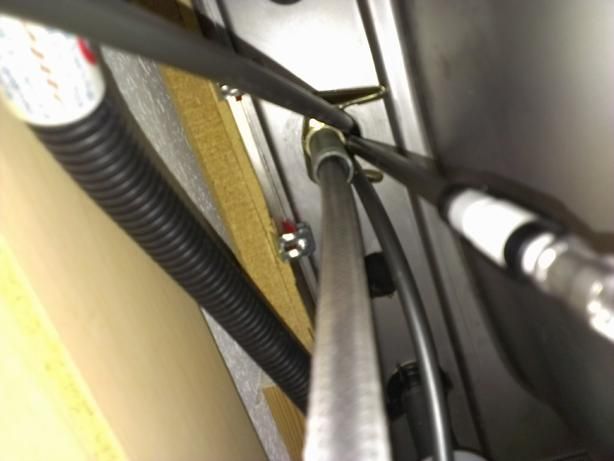
I ended up using a hollow hex wrench similar to the manufacturer's supplied hex tool.
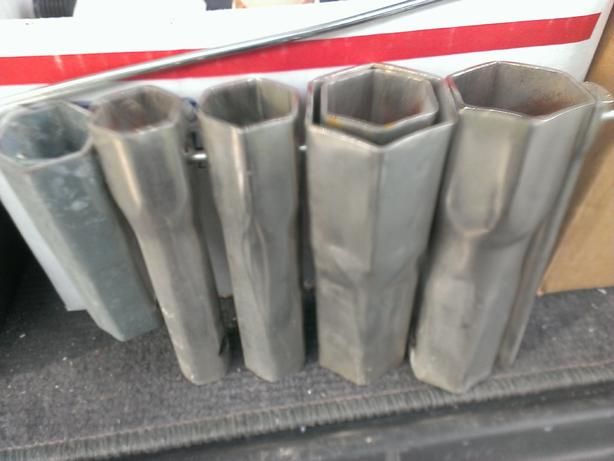
|
|
Post Reply
|
|
|
Author:
sum (FL)
I end up using one of these that fits the nut and it worked well. I like these because I could use a bigger one over the smaller one to extend the length to a longer wrench.

|
|
Post Reply
|
|
|
Author:
hj (AZ)
Strange, because I have always been able to have the control on the right without any problemw with the "U" bracket or hoses.
|
|
Post Reply
|
|
|
Author:
sum (FL)
may be because hj you have a magic touch. I tried to force the U to point to the front with the control to the right, it won't do it.
|
|
Post Reply
|
|
|
Author:
hj (AZ)
I would lke to have seen a photo of the faucet BEFORE you installed it. Normally, the manufactures position the two water lines parallelt to the handle, whwn the handle is on the right side. Yours appear to be twisted from that orientation.
|
|
Post Reply
|
|
|
Author:
sum (FL)
That is not the case (the two water lines being parallel to the handle). When the handle is moved to the right, the tubes follow it to the right. But the U shaped flange gives the most "room" when the tubes are in the front. In any case it's installed so until the next time it breaks I am leaving it alone.
Right now though I am sitting at home with all my windows shuttered waiting for hurricane Matthew to pass.
|
|
Post Reply
|
|
|
Author:
hj (AZ)
Maybe it will stop by and check out your faucet.
|
|
Post Reply
|
Please note:
- Inappropriate messages or blatant advertising will be deleted. We cannot be held responsible for bad or inadequate advice.
- Plbg.com has no control over external content that may be linked to from messages posted here. Please follow external links with caution.
- Plbg.com is strictly for the exchange of plumbing related advice and NOT to ask about pricing/costs, nor where to find a product (try Google), nor how to operate or promote a business, nor for ethics (law) and the like questions.
- Plbg.com is also not a place to ask radiant heating (try HeatingHelp.com), electrical or even general construction type questions. We are exclusively for plumbing questions.
Search for plumbing parts on our sponsor's site:
Special thanks to our sponsor:

|









